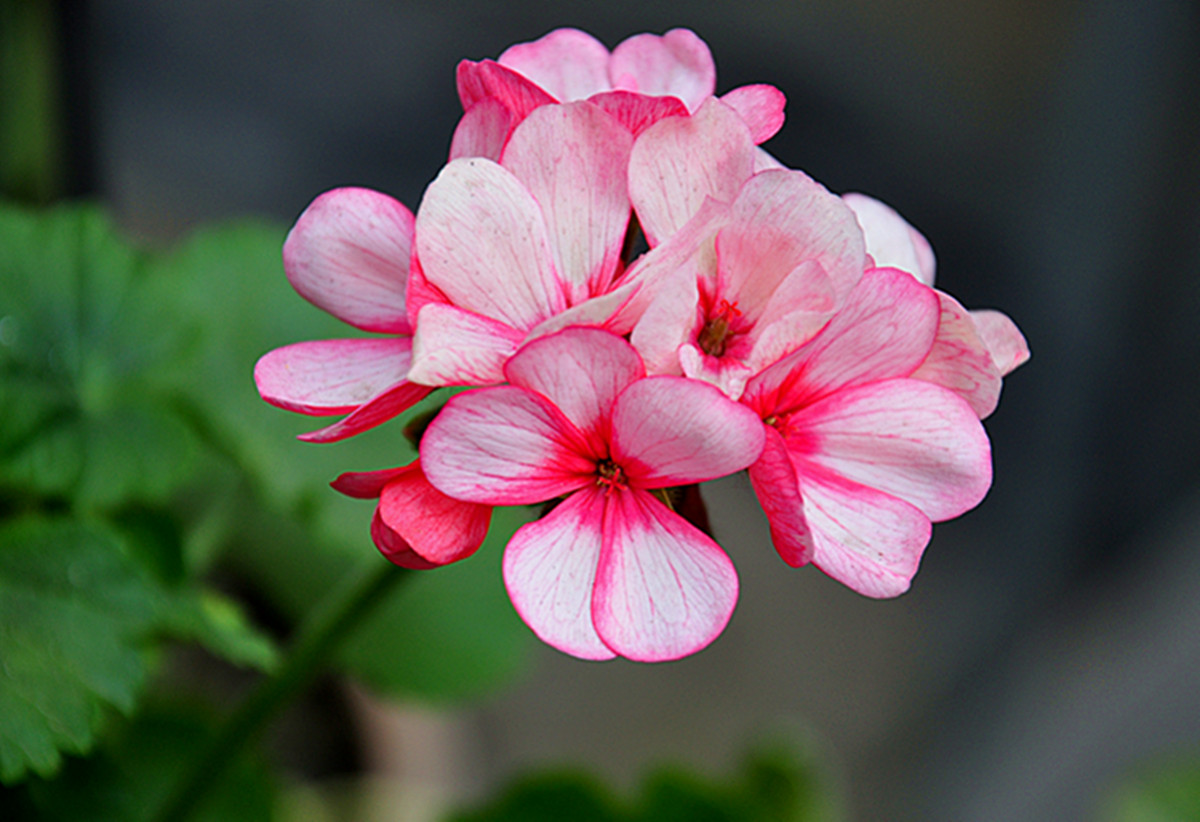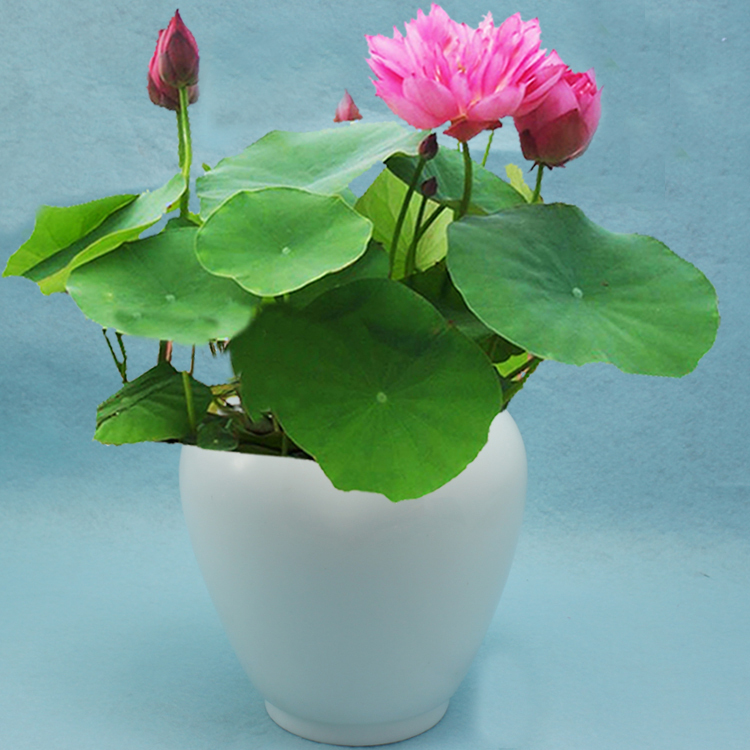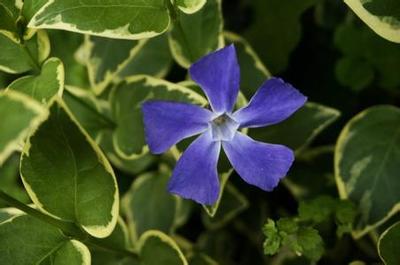Are geraniums poisonous? culture methods and matters needing attention of geraniums
Geranium (scientific name: Pelargonium hortorum), alias hydrangea, stone red, red red, sunflower, belongs to the petunia family, including about 230 species of perennial fleshy, subshrub or shrub plants. Geraniums are native to southern Africa and are widely cultivated all over the world. The young plants of pelargonium are fleshy herbs and the old ones are semi-lignified; flowers that decorate the windowsill are good in the West and are particularly common in continental Europe, such as Germany and Austria. The leaves of geraniums are usually alternate, palmately lobed or pinnately lobed, generally with long petioles, some species have deep and shallow lines on the leaves, each flower has five petals, and the flowers gather into umbrellas, called "pseudo-umbels". Flowers come in various shapes from star-shaped to funnel-shaped, white, pink, red, orange, purple and even nearly black in color. Next, the editor of the net will introduce the geraniums.

Are geraniums poisonous? culture methods and matters needing attention of geranium
Temperature control: the most suitable temperature for geraniums is 10 Murray 20 degrees Celsius, that is, spring and autumn is the most suitable, too cold in winter and too hot in summer. So in the summer, we must prevent the sun exposure, sunscreen is certainly useless, put it in a cool place. In winter, the indoor temperature should not be lower than 0 °, otherwise it will be frostbitten. If there is no warm equipment, turning on a 200 °light bulb in a small room also has a certain anti-freezing effect.
Moisture control: geraniums are taboo to be overwatered. If you find that the roots of geraniums fester, it is probably due to overwatering and muggy weather. The frequency of watering should be controlled by watering once every three or two days. Every time you need a large amount of water, you can only water it thoroughly.
Choice of soil: geraniums are suitable for survival in sandy soil, and the effect of mixing some sandy soil in the flower market will be better.
Pay attention to pest control: leaf spot and Fusarium wilt are easy to grow in geranium. if the leaf edge is withered and yellow, you should consult a professional florist and do not dispose of it at will.
To prevent the impact of bad weather: the windy weather will blow the geranium, and the heavy rain will make the geranium roots soaked by Rain Water, causing the roots to breathe anoxia, resulting in fester. So, in order to raise geraniums, you have to pay attention to the weather forecast.
Control of fertilization: too much fertilization at one time will cause dehydration of geraniums, but I can't tell you how much fertilizer is appropriate, because it has something to do with the quality of your soil, the size of the flowerpot and the size of the geranium. you'd better ask the shop owner the amount and frequency of fertilization when you buy flowers. If you apply too much fertilizer, such as too much nitrogen fertilizer, it will cause the plant to grow and not blossom. In this way, the value of your geranium is low. Excessive fertilization and logistical watering can relieve symptoms.
Plenty of sunshine: plenty of sunshine helps geraniums blossom, but if the temperature is too high, it is not suitable for direct sunlight. You have to control the degree of sunshine in spring and autumn, and in summer, pay attention to not basking in it if the temperature is too high.
Is the geraniums poisonous? Culture method of Pelargonium geranium
Fragrant leaf geranium is one of the varieties of geranium, the plant has volatile aroma, so many people like potted plants to decorate the home, and fragrant leaf geranium has the function of repelling mosquitoes, is it poisonous? What is the culture method of geraniums? Let's learn about this:
Basic information of geraniums:
The geranium is a kind of geranium native to southern Africa, especially South Africa. They are sometimes called geranium and mosquito repellent because they belong to the same family, but actually belong to the genus Pelargonium. Pelargonium fragrans has a very important position in the perfume industry. They are cultivated in large numbers to distill the aromatherapy of leaves.
Pelargonium geranium is very popular because of its volatile aroma. Can be used to make essential oil, its main ingredients are geraniol, citronellol, linalool and so on. Fragrant leaf geraniums have a variety of flavors, including rose, citrus, mint, coconut and bean curd, and a variety of fruit flavors. Because of easy cultivation and management and high yield of essential oil, it can be used as a substitute for low yield of other essential oils, such as rose essential oil or orange blossom essential oil.
The common name of the geranium is the rose geranium.
In addition, the leaves of geraniums are not "incense leaves" in cooking spices. Incense leaves are the leaves of laurel.
Is the geraniums poisonous?
Geranium essential oil is formed by more than 30 terpenoids and their derivatives. The main components of geraniol are geraniol (geraniol), citronellol (citronellol), linalool (linalool), citronellyl formate (citronellyl A), geranyl formate (geraniol) and menthone (menthol). Geranium oil can be used as a substitute for rose oil, for preparing flavors and as an additive for food, soap and toothpaste.
The genetic behavior of plant flower color or leaf spots is helpful to establish the genetic model of aroma components of Pelargonium fragrans. The aroma components of Pelargonium vulgaris were analyzed by gas chromatography-mass spectrometry (GC / MS). Based on the results, the genetic behavior was deduced, and the correctness of the model was verified by controlling the hybrid combination. The purpose is to provide material selection for cross breeding in the future, or to find out special components from the aroma, which can be used as variety identification of geranium.
Generally speaking, geraniums are not toxic, but the particles emitted by geraniums can cause itching of skin allergies, so it is advisable not to use them during pregnancy.
Culture methods of geraniums:
1. Soil: geraniums require fertile soil with good drainage. Pot soil can be mixed with rotten soil, rice chaff ash and garden soil, and then mixed with a small amount of superphosphate.
2. Watering: geraniums are resistant to drought and afraid of stagnant water. Therefore, in the process of growth, we should be in line with: "dry without watering, watering thoroughly, rather dry than wet", proper water control. Too much watering, basin soil water content is too large, will cause overgrowth or rotten roots. When the spring and autumn growth and flowering is exuberant, it can be watered more appropriately, but it should also be appropriate to keep the basin soil moist. If the temperature is low in winter and the plant grows slowly, it should be watered as little as possible.
3. Lighting: pelargonium is native to South Africa and likes the environmental conditions with plenty of sunshine, warmth and good ventilation. Under the condition that the light is not too strong in spring and early summer, the flowerpot can be placed in a place with sufficient light to receive sufficient light, but in the hot season of midsummer and early autumn, it is appropriate to put it in a shaded place to avoid strong light, otherwise, the branches and leaves will be burned.
4. Temperature: the suitable temperature for growth is 15-25 degrees, it is not resistant to high temperature, and the growth is poor in summer.
5. Fertilization: in cultivation, in addition to sufficient base fertilizer, thin liquid fertilizer can be applied every 7-10 days in the growing season, especially in the peak flowering period. It is better to dilute with rotten livestock and poultry manure with water, and it can also be poured with rotten cake fertilizer. 3-5 days before fertilization, little or no watering, watering when the basin soil is dry, is more beneficial to root absorption.
6. Pruning: in order to make the plant beautiful and blossom, thinning and pruning can be carried out if the plant grows too vigorously in spring. Cut off the residual flowers and over-dense branches in time after flowering. The dormant period is also pruned once, the yellowed old leaves are cut off, the overdense branches are thinned, and the overlong branches are cut short, so that after the dormant period, new branches are produced and buds continue to blossom. In addition, the geranium itself has a special smell and rarely suffers from insect pests. Therefore, there is no need for prevention and control.
Price of essential oil from Pelargonium fragrans
Geranium is an excellent herbal flower, it is the most popular in the perfume industry, so it is made into a large number of essential oils, etc., a drop of geranium essential oil, will make people feel physically and mentally comfortable. With regard to the price of geraniums, generally speaking, you can buy a bottle with only a few dozen yuan, of course, some high-grade essential oil products, the price is hundreds of yuan.
Afu/ Afu geranium essential oil 10ml price: ¥238.00
10ml price of Isilandon geranium essential oil: ¥129.00
AA net essential oil geranium essential oil 10ml price: ¥79.00
AFU geranium essential oil 10ml price: ¥188.00
10ml price of Meishantang geranium essential oil: ¥219.00
Xizilan authentic pure plant geranium essential oil second generation 10ml price: ¥185.00
Florihana rose geranium essential oil 5g price: ¥192.00
Is the geranium poisonous? through the above introduction, I believe everyone can understand that the geranium is not toxic, but it causes allergic reactions in some people, so if you have allergies to geraniums, do not use them. For more information about indoor plants, please follow the Flower section.
Is the geranium poisonous? the breeding method of geranium
Geranium light and elegant can also be delicate and gorgeous, deeply loved by people, often placed indoors as a potted plant, playing the role of purification and decoration. So does everyone know that geraniums are poisonous? The following is going to tell you the answer and how to reproduce geraniums.
Is the geranium poisonous?
Geranium itself is non-toxic, you can rest assured to breed at home, of course, for people with allergies, its pollen is easy to cause allergic skin allergies, so avoid putting geraniums indoors. Geraniums smell a bit like roses and peppermint. They are not only non-toxic, but also regulate hormones, stimulate lymphatic detoxification and balance skin oil secretion. At the same time, geraniums are also a good insect repellent. Pregnant women during pregnancy, babies at home and other conditions are not suitable to put geraniums, because pregnant women and babies are more sensitive and are likely to cause allergies due to the stimulation of geraniums.
Propagation methods of geraniums:
1. Sowing and reproduction
It can be carried out in spring and autumn, and indoor pot sowing in spring is better. The optimum temperature for germination is 20-25 ℃. The geranium seed is not large, and the soil cover should not be deep after sowing, and it will germinate in about 2-5 days. It will sow in autumn and blossom in the summer of the following year. After sowing and propagation, excellent intermediate varieties can be selected and bred.
2. Cuttage propagation
All geraniums can be cut except that the geraniums are semi-dormant from June to July. It is better to use spring and autumn. High temperature in summer, cuttings are easy to blacken and rot. The cuttings are 10 cm long, and the top part is the best, with vigorous growth and fast rooting. After cutting the cuttings, let the cut dry for several days, form a thin film, and then insert it into the sand bed or the mixed matrix of expanded perlite and peat, be careful not to hurt the bark of the cuttings, otherwise the wound will rot easily. After insertion, put it in a semi-shaded place and keep it at room temperature for 13-18 ℃. It will take root after 14-21 days. When the root length is 3-4 cm, it can be potted. Soaking the base of cuttings with 0.01% indolebutyric acid for 2 seconds can improve the survival rate and rooting rate of cuttings. Generally, geranium cuttings blossom for 6 months, that is, cutting in January, flowering in June, cutting in October, and flowering in February to March of the following year.
- Prev

The planting method of bowl lotus
Lotus (scientific name: Nelumbonucifera), also known as white lotus and hibiscus, belongs to the family Nymphaeaceae. Nelumbo nucifera perennial aquatic herb flowers. The underground stem is long and thick, with long nodes and round leaves. Florescence from June to September, solitary at the top of the pedicel, petals numerous, embedded in the receptacle cave
- Next

Picture of how to grow flowers and leaves and periwinkle
Catharanthus roseus (scientific name: Vincamajorvar.variegata) is a variety of Catharanthus roseus of Apocynaceae. It is distributed in Jiangsu and other places of Chinese mainland, but it has not been introduced and cultivated artificially at present. Dwarf, trailing branches, creeping growth, more than 2 meters long
Related
- Fuxing push coffee new agricultural production and marketing class: lack of small-scale processing plants
- Jujube rice field leisure farm deep ploughing Yilan for five years to create a space for organic food and play
- Nongyu Farm-A trial of organic papaya for brave women with advanced technology
- Four points for attention in the prevention and control of diseases and insect pests of edible fungi
- How to add nutrient solution to Edible Fungi
- Is there any good way to control edible fungus mites?
- Open Inoculation Technology of Edible Fungi
- Is there any clever way to use fertilizer for edible fungus in winter?
- What agents are used to kill the pathogens of edible fungi in the mushroom shed?
- Rapid drying of Edible Fungi

